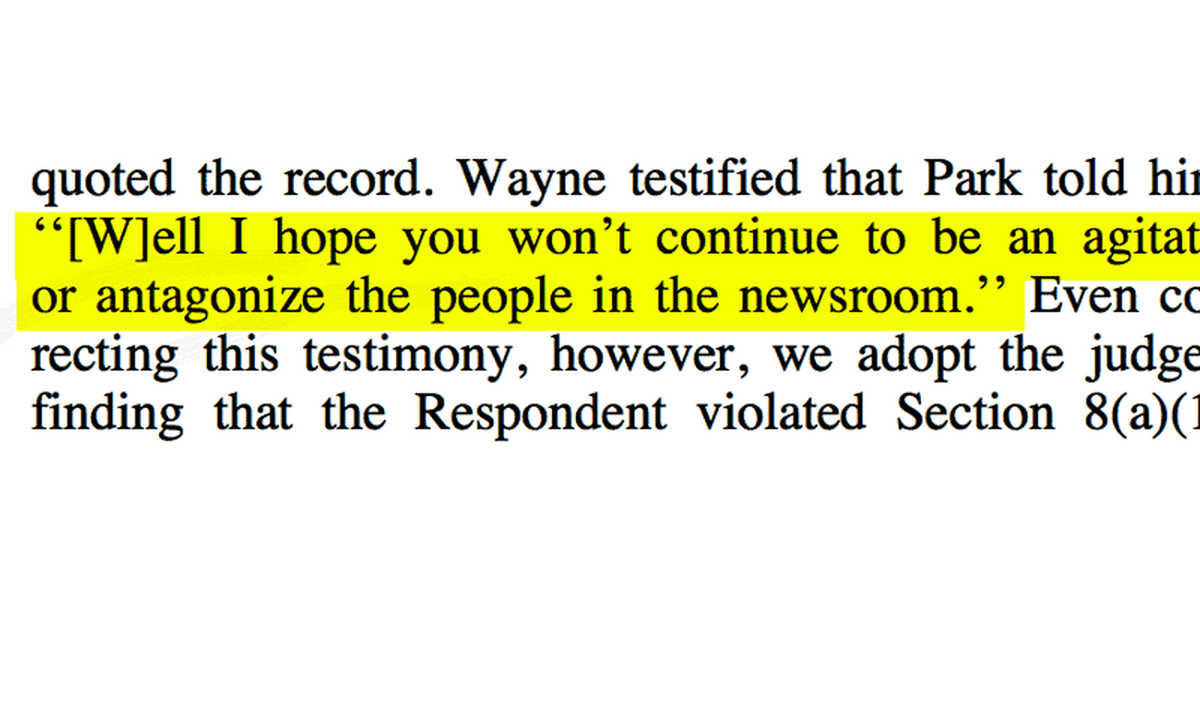Learning:
Ms. Management: I Hope You Find the Time to Read this Column
The difficulty of soft power + bias in job listings

If you’re the kind of person who is into both checks on the executive branch and the finer points of employment law, you may already have come across the case of KNTV, Inc. and American Federation of Television and Radio Artists, AFL–CIO.
If not—and who can blame you—a quick primer: that case set the precedent that an employer’s use of the phrase “I hope you” could be reasonably construed as “coercive.” There are important qualifiers to that, and I am manifestly not a lawyer. But it got me thinking about the “it would be good if” school of management.
I recognize the necessity of the “what if we tried” construction by managers who are still getting a feel for things or who come from underrepresented backgrounds. But too often, it’s a tactic that is wielded not intentionally, but thoughtlessly. It’s an approach that ignores power differentials—or, at worst, is cynical about their effects.
We might tell ourselves as managers that we are accessible and approachable and also that it’s clear to our teams when we’re making a suggestion and when we’re giving an order. But since some of us are not comfortable with the hierarchy implied by the notion of giving orders, we lean on hedging language and smiley-faced emoji to blunt the blow of our Slack-mediated edicts.
I was sitting in a meeting room this week with someone who was experiencing the very particular pain of, “my boss has a new thing she very suddenly cares a lot about and that means now I do too.” I watched as she tried to reply to each email with something considered and meaningful, and as she forwarded some of them to her direct reports with a quick, “where are we on…”
These behaviors are everywhere and they are often baked into “the culture” of our organizations. The convenience of asynchronous communications often robs us of any awareness of or interest in how our messages are being received.
I’m thinking we can do better than that.
Racial Bias in Job Listings
Ramon asks: “do you have any resources that talk about racially biased language in job descriptions?”
If you’re looking for general information about how to write more inclusive job descriptions, these abound. The most well documented relates to gender (and this area is perhaps the most well studied), and there are resources on how not to exclude people with disabilities. Paid services like Atipica and Textio will throw algorithms at the challenge.
There is less research into the language of job descriptions that controls for race and ethnicity, but there are certain phenomena applicable to non-white candidates.
For instance, people who do not have white-sounding names get fewer call-backs to interviews, by a large margin. Where employers post jobs has an outsized effect on which candidate pools have access to them, which is why I recommend active outreach to associations like NAHJ, NABJ, AAJA, and SAJA. Similarly, leaning heavily on referrals will result in an applicant pool that closely resembles the status quo.
There are also certain implicit expectations—like a preference for candidates with a slew of flashy-and-often-unpaid internships, or those with substantial contributions to the open source community, or those who can swiftly move to NYC, LA, SF, or DC without a relocation package—that tend to function as proxies for privilege.
And then there are those pesky implicit biases.
(As an aside, this is one of the more interesting frames for these that I’ve come across recently, from a document prepared by Dartmouth’s Office of Institutional Diversity & Equity (docx file): “it is not relevant to assume that a single woman or an African-American person would not want to live in a rural community, or that a married woman’s husband would not move with her. These are personal decisions which lie beyond the charge of a search committee and are not excuses for failing to give a qualified individual the opportunity to be interviewed for or offered a position.”)
And there there are the other signals that might cause candidates from racial or ethnic minority backgrounds to drop out of the process. What is the composition of your senior management team? Who are the people on your interview panels? Whose faces appear on your web site and company materials? What’s the word on the street about who tends to get cut first when in each round of layoffs? Which employees do you send to speak on panels or to attend conferences? Whose stories does your editor in chief enthusiastically endorse on Twitter? Does your organization regularly produce the kind of work that ends up in Slack DMs accompanied by unimpressed reaction gifs? Did you or your HR team decline to make provisions for your employees who wanted to adjust their hours during Ramadan? Do you even have any employees for whom this provision might be helpful? Are you sure you know what Ramadan is?
There is always more work to do.
Resources
- Can You Spot The Gender Bias In This Job Description?
- Evidence That Gendered Wording in Job Advertisements Exists and Sustains Gender Inequality
- Non-Prejudicial Language for ADA Job Descriptions
- Are Emily and Greg More Employable than Lakisha and Jamal? A Field Experiment on Labor Market Discrimination
- Hey, tech companies: your employee referral policy may be violating US law
- This Isn’t the Diverse Newsroom You’re Looking For
- Faculty Recruitment and Selection: A Guide for the Dartmouth College Arts and Sciences Faculty (docx file)
Do you have questions about newsroom management and leadership? Facing a tough editorial challenge? Submit your questions to Ms. Management.
Credits
-
 Stacy-Marie Ishmael
Stacy-Marie Ishmael
Stacy-Marie Ishmael is a writer, editor, and product manager.




 Same Diff: Tracking Trump’s People
Same Diff: Tracking Trump’s People